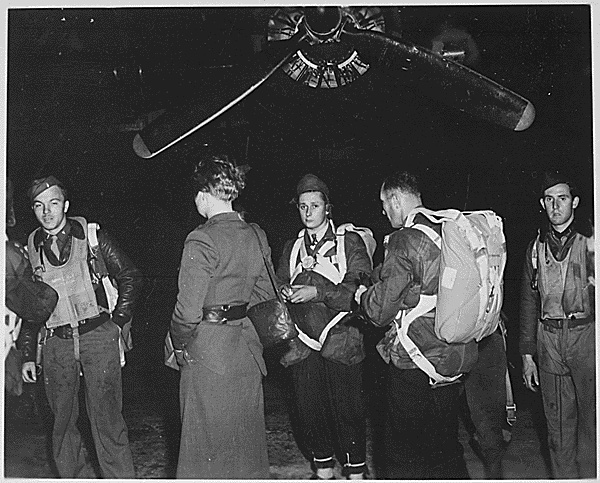Worse, I’m not sure I want to. If I’m away and something big happens, I usually ask a friend if he can stop by a newsstand so I don’t miss the hard copy of a good front-page headline. If I’m somewhere with a critical mass of vacationing New Yorkers, I set out on foot, knowing there’s likely a Post nearby. In August, 2022, just after the F.B.I. raid at Mar-a-Lago, in search of allegedly mishandled classified documents, I rushed into a liquor store on Martha’s Vineyard and scored a copy. On the cover was Trump, cheeks ablush. The headline: “YOU COULDA JUST ASKED.”
Maybe I’m simply interested in that voice, that loud, familiar sound—the demotic tone, the direct address, the sense of a great organ yelling into power’s ear and being overheard everywhere, from Dyckman to Dyker Heights.
The Post, the oldest daily newspaper in the United States, was founded in 1801 by Alexander Hamilton. With a group of his fellow-Federalists, Hamilton had scrounged together the money to establish the upstart broadsheet, then called the Evening Post, in order to express the group’s disapproval of the newly elected President, Thomas Jefferson, and his party of populist libertarians, the Democratic-Republicans. That year, Jefferson avoided giving an annual state-of-the-nation speech to Congress and, instead, delivered a message in the form of a letter. Hamilton—taking his new paper for a spin like a Ferrari through the backstreets of a small town—wrote a series of acidic articles refuting, one by one, the “strange absurdity” of his adversary’s arguments. The President’s message, he wrote, was “a performance which ought to alarm all who are anxious for the safety of our Government, for the respectability and welfare of our nation.” Anxiety asserted as a kind of duty, high stakes made existential, personal vendetta masquerading as the news—it was lurid overstatement from the start.
Through the decades and editorships that followed, the Post took up many causes, including abolitionism, collective bargaining, opposition to central banking. (One strain of continuity is its interest in the performing arts: it has almost always employed a theatre critic.) In 1939, the finance heiress Dorothy Schiff bought the paper and transformed it into a largely liberal tabloid, especially popular among the Jewish upper-middle classes. Socially conscious journalist heroes such as Murray Kempton and Pete Hamill worked as columnists. By the seventies, a comfortable sleepiness had set in; the paper was more respected than read. In 1962, Schiff had declared herself editor—according to Nora Ephron, a Post alumna, she “changed the focus of the paper from hard-hitting, investigative, and liberal to frothy, gossipy, and woman oriented”—but she resisted spending the money necessary to compete in a crowded tabloid market.
The popular narrative tends to be a bit unfair to Schiff, focussing too much on the late decline and ignoring the real excellence to which her Post often rose. Kempton and Hamill were icons of their era, and in 1975 Schiff hired Frank Rich, who turned out to be one of the finest drama critics of the late twentieth century. Under Schiff’s watch, the paper even showed up in great works of art. In the poem “The Day Lady Died,” a potent ditty of avoidant grief, from 1964, Frank O’Hara name-checks the Post as having informed him of the death of one of his heroes, Billie Holiday:
“Paper of Wreckage: An Oral History of the New York Post, 1976-2024” (Atria Books), by the former Posties Susan Mulcahy and Frank DiGiacomo, picks up at the end of the Schiff era. The book is a fun pile of quotations from Post employees and other voices on the paper’s past half century. By the end of Schiff’s tenure, the Post “needed a shot of adrenaline,” the former City Hall bureau chief David Seifman says.
That adrenaline was injected in the form of Rupert Murdoch, who bought the paper in 1976. He was a big-spending, baldly ambitious Australian, and, like Schiff, an heir: his late father had bequeathed to him a newspaper, the beginnings of an empire. Then in London, cutting his teeth on quasi-journalistic acquisitions such as News of the World and the Sun, Murdoch developed a diabolical, swashbuckling tabloid style.
Many of the Post’s current practices—a lax attitude toward accurate attribution, a habit of placing a scantily clad woman on page 3, an emphasis on photography over lengthy text—were imported from the U.K. Along with Murdoch came a cadre of troublemakers, Aussies and Englishmen who terrorized their female colleagues and, if the anecdotes in “Paper of Wreckage” can be trusted, drank their way through the seventies and eighties.
The change in sensibility made the Post more fun, if also less scrupulous. The paper chose sides, helping the conservative-leaning Democrat Ed Koch into Gracie Mansion before devoting its advocative energy to conservatives, including Giuliani. Its reporters covered the city ferociously and with an adversarial edge. One of Murdoch’s first moves was ramping up the paper’s photos in both color and size. In 1979, when Carmine Galante, the head of the Bonanno crime family, was killed, the photographer Hal Goldenberg hoofed it up onto a roof in Brooklyn to get a shot of the gangster’s cooling corpse. “There’s Carmine,” he says with evident glee, in “Paper of Wreckage,” “with his cigar in his mouth and his eye blown out. I start making pictures.” On the day of Galante’s funeral, a reporter was “jostled and menaced” and a photographer punched. The paper made big characters—the kinds that populate operas in the same swaggering, dramatic way—feel bigger.
It was those huge front-page pictures which first grabbed me as a kid. I’d ride the downtown A train with my mom, scrutinizing with a sociological interest my fellow-riders’ reading material. Guys in dress shoes and trenchcoats toted the Times, folded into tight businesslike rectangles. Among the visibly working class, the tabloids were more popular. Daily News readers skewed female, Blacker and browner. The Post’s readers tended to be men, often white guys in jeans frosted with grit and paint.
My mother, like many of the adults I knew—Black people who worked to live, idealized education, and held up reading, especially, as aspirational for their kids, a way to make the future more free—joked about the Post being fodder for people with low literacy levels. The News was O.K. by her lights, if you didn’t have much time and needed to skim. But, on afternoons after church, she made a point of picking up the Sunday Times. That was a paper.
I agreed then, and I still do. The Times, chock-full of facts, shows up on my steps every morning. But, on those long-ago train rides, I always peeked at the Post, snickering at the wordplay of the headlines and the gruesome frankness of the pictures. The Post addressed itself to the berserk and unreasonable city I was starting to love, whose textures I couldn’t always feel in the Times. At some point in my thirties, I started sneaking copies of the Post, reading the rag outdoors and then throwing it away, like a smoker hiding his habit.
At the Post’s old headquarters from 1970 to 1995, near the South Street Seaport—in its early days, a time-forgotten area teeming with gang activity—interestingly malicious characters tended to wash up. One such figure, a subject of ambivalent fixation in “Paper of Wreckage,” is the columnist and editor Steve Dunleavy, a favorite Murdoch lieutenant whose tactics, personal and journalistic, were particularly wicked.
As one legend goes, Dunleavy pretended to be a grief counsellor in a ploy to get an exclusive interview with the mother of Stacy Moskowitz, the final victim of the serial killer known as the Son of Sam. Usually a half-drunk, shameless flirt, Dunleavy dressed in his nice-boy best and insinuated himself with Moskowitz’s mom, with whom he grew so close—even after admitting his dishonesty—that she refused to talk to reporters from the Daily News. In another anecdote, Dunleavy had sex—outdoors, atop a snowdrift—with the fiancée of one of his colleagues. In the book, the cuckolded party, an editor, just laughs it off, chalking it up to the crazy old days.
Dunleavy was in many ways the true embodiment of the Murdoch regime. He knew how to find a good story and stretch it across weeks, even years. He was also openly and casually bigoted. His racism—like the consistent racism of the Murdoch Post—is well documented in “Paper of Wreckage.” Once, Dunleavy, aggrieved by attempts to diversify the reportorial ranks, griped to a Black colleague, Gregg Morris, that, in his estimation, “there are too many niggers in the newsroom.” Another Black writer, Ramona Garnes, had to calm Morris down, as Morris recalls:
“I’ll say this about the Brits and Aussies,” Garnes says, “they were upfront. There was no smile in your face and stab you in the back.” Pamela Newkirk, a widely respected reporter, states that, for the Post, “crimes against Blacks, no matter how heinous, were not considered newsworthy.” Conversely, if a Black person was so much as suspected of a crime, the Post could turn its citywide volume up to a perilous decibel, with sometimes terrible consequences. Following the infamous case of the Central Park jogger, in 1989, in which a twenty-eight-year-old woman was brutally raped and beaten into a coma, the Post published the confessions—later confirmed forced—and the names and addresses of the young men known today as the Exonerated Five, exhorting on a daily basis that they be found guilty of the crime. Yusef Salaam, one of the Five, who now serves on the New York City Council, has summed up his experience with the paper with more sang-froid than it deserves: “The Post has been one of the most unforgiving in terms of its negative coverage of the Black community.”
Other disgraces abounded at the Post’s office. We talk a lot these days about the follies of the contemporary H.R. department, but any one of these stories ought to give a sensitivity trainer an on-the-spot stroke. There was, for instance, a guy named Alan Whitney, who “wore devil horns and sent panties to female staffers through interoffice mail.” “Psycho” is one of the Post’s favorite words for villains, as is “creep.” As it turns out, Posties know whereof they speak.
“Paper of Wreckage” details how the Post’s reporters often came from reputable local outfits such as Newsday, on Long Island, but the tabloid’s reputation made it hard for them to get jobs in “straight” journalism after their tour of duty at the Seaport, even though more upscale publications often mined the Post for ideas. “The glossy magazines at Condé Nast would get a gossip pack,” one reporter says, “where the interns would Xerox tabloid stories, staple them together, and distribute that to all the editors in the morning so that the editors could steal the stories and assign think pieces.”
It’s easy to understand the allure of those grubby items, ripe for long-form elaboration. The writer and historian Garry Wills, in his great Pulitzer-winning book, “Lincoln at Gettysburg: The Words That Remade America” (1992), persuasively argues that the economy and the power of Lincoln’s language was partly a reflection of the rising technologies of his time: “the railroad, the telegraph, the steamship.” Lincoln’s terse, repetitive strands of simple syntax—“we cannot dedicate, we cannot consecrate, we cannot hallow this ground”—had something to do with his society’s new fetish for speed. The Post’s language, by contrast, borrows from the sonics of violence: it sounds like weaponry, mowing down its targets with unmerciful percussion. The nonagenarian gossip writer Cindy Adams’s syntactically demented, Borscht Belt prose is the perfect distillation of the Post’s style. Here’s a recent Adams reverie—equal parts nostalgia and reactionary sneer—about old New York:
Premium IPTV Experience with line4k
Experience the ultimate entertainment with our premium IPTV service. Watch your favorite channels, movies, and sports events in stunning 4K quality. Enjoy seamless streaming with zero buffering and access to over 10,000+ channels worldwide.

















